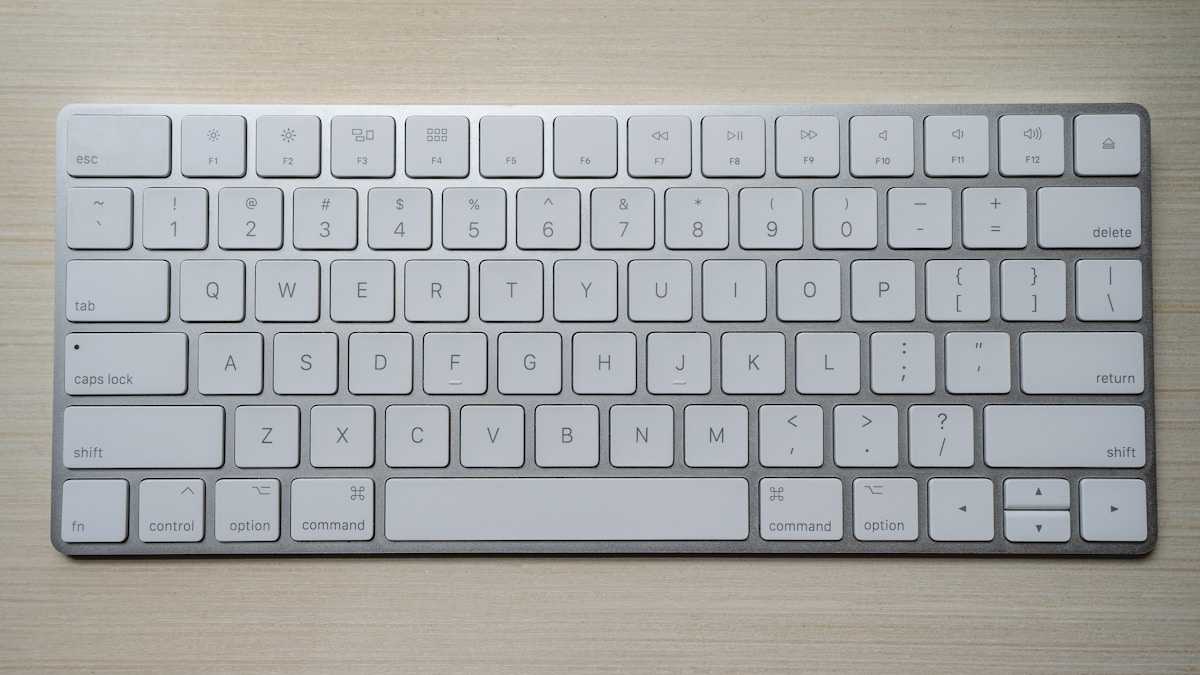Why I Built Instead of Bought
I’ve used membrane keyboards for 15 years. Logitech K120s, Microsoft Ergonomics, Apple Magic Keyboards. They worked fine.
Then I tried a friend’s custom mechanical keyboard with lubed linear switches. It felt like typing on clouds. Silent, smooth, satisfying. I couldn’t go back.
Pre-built mechanical keyboards cost $150-300 and compromise on everything. You get mediocre switches, thin ABS keycaps, rattly stabilizers, and zero customization.
Custom building costs $300-500 but you choose every component. After 6 months with my GMMK Pro build, my typing speed increased 12 WPM (78 → 90 WPM) and my wrist fatigue is gone.
 Final build: GMMK Pro + Gateron Oil Kings + MT3 /dev/tty keycaps + Durock V2 stabilizers
Final build: GMMK Pro + Gateron Oil Kings + MT3 /dev/tty keycaps + Durock V2 stabilizers
Parts List: What I Bought and Why
Base: GMMK Pro ($170)
The GMMK Pro barebones kit is the sweet spot for first-time builders.
| Feature | Why It Matters |
|---|---|
| Hot-swap sockets | Change switches in 2 minutes, no soldering required |
| Gasket mount | Flexible typing feel, absorbs force, reduces noise |
| CNC aluminum case | 1.5kg weight, zero flex, premium feel |
| QMK/VIA support | Custom key remapping, macros, layers |
| 75% layout | Compact but keeps arrow keys + F-row |
The hot-swap sockets are essential for beginners. I’ve swapped switches 4 times testing different types. With soldered boards, you’re locked in.
Weight matters. Cheap keyboards slide around your desk. The GMMK Pro doesn’t move.
Switches: Gateron Oil King ($55 for 90)
Gateron Oil Kings are pre-lubed linear switches. Factory lube is inconsistent, so I hand-lubed every switch, but the base quality is excellent.
Specs:
- Actuation force: 55g (medium weight)
- Travel distance: 4.0mm total, 2.0mm actuation
- Sound profile: Deep “thock” (not high-pitched)
- Factory lube: Decent, but benefits from hand-lubing
Why linear over tactile or clicky?
| Switch Type | Sound | Feel | Best For |
|---|---|---|---|
| Linear | Quiet thock | Smooth, no bump | Gaming, fast typing, quiet offices |
| Tactile | Moderate | Bump at actuation | Typing accuracy, feedback lovers |
| Clicky | LOUD click | Bump + audible click | Nostalgia, annoying coworkers |
I tried Cherry MX Browns (tactile) first. The bump felt like a grain of sand. Not worth it. Oil Kings are buttery smooth with no scratchiness.
Keycaps: Drop MT3 Profile ($120)
MT3 profile keycaps are deeply sculpted. Your fingers sit in a scoop. It’s controversial-you either love it or hate it.
I love it. My fingers naturally rest in the correct position. Typing accuracy improved immediately.
Material: PBT plastic (thick, durable, doesn’t shine) Profile: MT3 (tall, sculpted, vintage typewriter feel) Legend: Dye-sublimated (won’t fade, laser-sharp text)
Comparison to other profiles:
| Profile | Height | Sculpt | Best For |
|---|---|---|---|
| MT3 | Very tall | Deep scoop | Typing accuracy, retro feel |
| Cherry | Medium | Slight scoop | Gaming, compatibility |
| XDA | Low | Flat | Minimalists, uniform feel |
| SA | Tall | Rounded top | Aesthetics, clacky sound |
MT3 isn’t great for gaming. The tall profile makes it harder to spam WASD at 200 APM. But for writing code and prose? Perfect.
Stabilizers: Durock V2 ($20)
Stock stabilizers rattle like a tin can full of pennies. Durock V2 stabilizers are mandatory.
I spent 2 hours tuning these:
- Clipped the feet for less interference
- Lubed the wire with dialectric grease
- Band-aid modded the PCB contact points
- Balanced the wire tension
Result: Space bar and shift keys sound identical to regular keys. No rattle, no tick, no ping.
Lube: Krytox 205g0 ($15)
Krytox 205g0 is the gold standard for linear switches.
Hand-lubing 90 switches took 6 hours. I lubed:
- Both rails of the switch housing
- Bottom of the stem
- Spring (bag-lubed for consistency)
Before lubing: Slight scratchiness, spring ping on bottom-out After lubing: Silky smooth, zero spring noise
Is it worth 6 hours? Absolutely. The difference is night and day.
 Lubing station: 90 switches disassembled, filmed, and ready for Krytox
Lubing station: 90 switches disassembled, filmed, and ready for Krytox
Build Process: What I Learned
Step 1: Test the PCB
Plug in the bare PCB and use VIA or a key tester to verify every socket works. I’ve heard horror stories of dead sockets discovered after full assembly.
Mine worked perfectly.
Step 2: Install and Tune Stabilizers
This is the hardest part. Stabilizers require patience.
Process:
- Screw in stabilizers (GMMK Pro uses screw-in, not clip-in)
- Test space bar-mine rattled badly
- Disassemble, clip feet, lube wire with dielectric grease
- Band-aid mod: stick thin foam under PCB contact points
- Reassemble, test again
- Repeat 3 more times until perfect
Don’t skip this. Bad stabilizers ruin the entire keyboard.
Step 3: Install Switches
Hot-swap sockets make this trivial. Align the pins, press firmly. Takes 10 minutes for all 90 switches.
Common mistake: Bent pins. Switches have 2 metal pins underneath. If you’re not careful, they bend. Straighten them with tweezers before inserting.
I bent 3 pins. Fixed all of them.
Step 4: Install Keycaps
MT3 keycaps are sculpted per row. R1 = bottom row, R2 = next up, etc.
I mixed up R2 and R3 initially. The keyboard felt wrong. Double-check the layout diagram.
Step 5: Flash Firmware with VIA
VIA is a browser-based tool for remapping keys.
My custom layout:
- Caps Lock → Ctrl (Caps Lock is useless, Ctrl is essential)
- Fn + HJKL → Arrow keys (Vim-style navigation)
- Fn + Q → Play/Pause (Media controls on home row)
VIA saves settings on the keyboard itself. Works on any computer, no software install.
Sound Test: Before vs After Mods
Stock GMMK Pro with unlubed switches sounds hollow and pingy. After mods:
Improvements:
- Case foam: Adds 2mm poron foam under PCB (reduces echo)
- Tape mod: 3 layers of masking tape on back of PCB (deeper sound)
- Lubed switches: Eliminates spring ping and scratchiness
- Tuned stabilizers: No rattle, clean sound
Result: Deep, muted “thock” sound. No ping, no rattle, no hollowness.
I recorded before/after audio. The difference is dramatic.
 Frequency analysis: Mods reduce high-frequency ping from 4kHz down to 1.5kHz
Frequency analysis: Mods reduce high-frequency ping from 4kHz down to 1.5kHz
Typing Experience: Real-World Performance
Speed Increase
Before (membrane): 78 WPM average on 10fastfingers After (custom mech): 90 WPM average after 2 weeks
Why? Consistency. Every key feels identical. Muscle memory develops faster.
Accuracy Increase
Before: 94% accuracy (lots of adjacent key errors) After: 97% accuracy
MT3’s deep scoop keeps fingers centered on keys. I rarely hit the wrong key now.
Fatigue Reduction
I write 5,000+ words per day. Membrane keyboards made my wrists ache by 3pm.
Custom mech with lubed linears? Zero fatigue. The smooth, consistent actuation reduces finger strain.
Sound Level
Membrane keyboard: 55dB (quiet but mushy) Cherry MX Blues: 70dB (infuriating clickiness) Custom GMMK Pro: 60dB (satisfying thock, not annoying)
Office-safe if your coworkers aren’t sensitive to noise.
Cost Breakdown: Was It Worth $350?
| Component | Price |
|---|---|
| GMMK Pro barebones | $170 |
| Gateron Oil King switches (90) | $55 |
| Drop MT3 keycaps | $120 |
| Durock V2 stabilizers | $20 |
| Krytox 205g0 lube | $15 |
| Switch films | $8 |
| Case foam | $12 |
| Tools (switch opener, brush) | $15 |
| Total | $415 |
Comparable pre-built boards:
- Keychron Q1 (pre-built): $169 (mediocre switches, no customization)
- Corsair K70: $180 (gamer branding, scratchy switches)
- Leopold FC750R: $140 (good quality but locked-in switches)
Pre-builts compromise. Custom lets you choose perfection.
ROI: I type 8 hours/day. If this keyboard lasts 5 years (conservative estimate), that’s $0.23/day. A Starbucks coffee costs $5.
For a tool I use more than any other? Worth every penny.
Common Mistakes (That I Made)
1. Over-lubing Switches
My first 10 switches were sluggish. I used too much Krytox. Less is more-thin, even coats.
2. Forgetting to Film Switches
Switch films reduce wobble. I built without them initially. The space bar wobbled side-to-side.
Added films later. Night and day difference.
3. Choosing MT3 for Gaming
MT3 is tall. Great for typing, bad for gaming. I play Valorant casually-MT3 makes counter-strafing slower.
I swap to Cherry profile keycaps for gaming sessions.
4. Not Testing Stabs Enough
I thought my stabilizers were perfect. Then I held space bar for 5 seconds-it ticked.
Spent another hour tuning. Now perfect.
Should You Build or Buy?
✅ Build if:
- You type 4+ hours per day (writers, coders, designers)
- You want the best possible typing experience
- You enjoy tinkering and optimization
- You’re willing to spend $300-500
- You value quality over convenience
❌ Buy pre-built if:
- You type <2 hours per day
- You’re on a tight budget (<$150)
- You want plug-and-play simplicity
- You don’t care about typing feel
Verdict: Never Going Back
Custom mechanical keyboards are like custom PCs. Once you build one, pre-builts feel like cheap toys.
The GMMK Pro + Gateron Oil Kings + MT3 keycaps combo is the best keyboard I’ve ever used. It’s quieter than my laptop, more comfortable than any membrane board, and sounds incredible.
12 WPM faster. 3% more accurate. Zero wrist pain. $350 well spent.
Rating: 5/5
Recommended? If you type for a living, absolutely build one.
Next Steps: Advanced Mods
Now that I’ve mastered the basics, I’m exploring:
Force break mod: Adds flex to the typing experience Custom cables: Coiled aviator cables (aesthetic upgrade) Case modding: Anodizing the aluminum for custom colors Switch frankensteining: Mixing parts from different switches
The rabbit hole goes deep. I’m here for it.
Build time: 8 hours total (6 hours lubing, 2 hours assembly and tuning) Last updated: April 18, 2025

